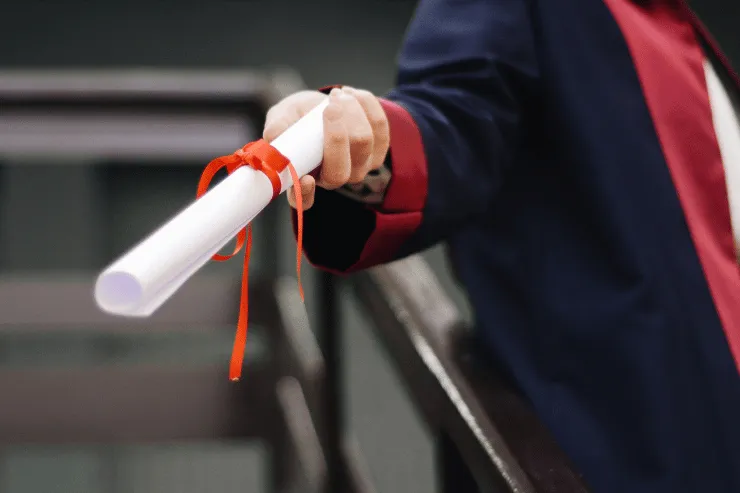
Introduction
Convocation ceremonies are some of the most celebrated academic events in a university’s calendar. They are filled with formality, tradition, pride, and emotion—especially for students graduating after years of hard work. But amidst the applause for students and scholars, there is one special moment that stands apart: the conferring of an honorary doctorate. This moment often captures the imagination of the audience, as someone who never studied at the institution is honoured on stage with the university’s highest academic recognition.
But how exactly is this honour presented? What happens behind the scenes and on stage? This blog offers a complete look into how honorary doctorates are awarded during convocation events in India.
The Planning Behind the Ceremony
Before the convocation takes place, a lot of preparation goes into selecting the honorary doctorate recipient. Once the university’s academic council or governing body approves a name, formal communication is sent to the individual. If they accept, the university includes them in the list of convocation invitees and begins logistical planning.
A few key steps happen before the public event:
- The university prepares a citation or a formal document describing the achievements of the recipient.
- The convocation script is updated to include the honorary doctorate segment.
- Robes, sashes, and certificates are arranged as per university tradition.
- Special seating and protocol are coordinated if dignitaries or VIPs are expected.
Honorary doctorate recipients are given the same dignity as other doctoral candidates—sometimes even more, as the award celebrates a lifetime of contribution.
Order of Events During the Ceremony
Each university in India may have its own structure, but most follow a traditional order during the conferral of an honorary doctorate:
- Introduction of the Recipient: The announcer or academic official introduces the recipient with a short but respectful citation. This usually includes their background, contributions, and reasons for selection.
- Calling to the Dais: The recipient is invited on stage, often escorted by a senior university official. A formal academic robe and cap may be placed upon them, depending on the university’s practice.
- Conferral of Degree: The Vice Chancellor (or the Chancellor, usually the Governor of the state) formally confers the degree by reading a statement such as, “By the authority vested in me, I confer upon you the degree of Doctor of Letters (Honoris Causa)…”
- Presentation of Certificate: The recipient is handed a scroll or certificate that bears the university seal, the name of the honorary degree, and the recipient’s name.
- Moment of Acknowledgement: The recipient may bow, fold their hands in a namaste, or offer a short gesture of thanks to the audience and university.
- Optional Acceptance Speech: Some universities invite the recipient to address the gathering. Others may skip this depending on time, format, or the recipient’s choice.
This process is often accompanied by applause, camera flashes, and respectful silence from the audience.
Dress Code and Symbols of Honour
Honorary doctorate recipients are usually robed in a special gown that signifies their honorary status. While standard doctoral candidates wear black or deep-coloured robes, honorary recipients may receive robes with a distinctive colour or trim.
Some universities also provide:
- A citation plaque
- A traditional shawl or stole
- A university memento or medal
The dress code may vary between universities—some follow British academic traditions with mortarboards and sashes, while others use Indian elements like angavastram or pagris to add a cultural touch.
Examples from Indian Universities
Indian institutions take great pride in this tradition, and their ceremonies reflect that sentiment.
- At Jawaharlal Nehru University (JNU), the recipient is introduced with a bilingual citation and is seated beside the Chancellor during the convocation.
- Banaras Hindu University (BHU) often invites classical musicians or scientists as honorary recipients, and their citations are delivered in both Sanskrit and English.
- State universities in Maharashtra and Tamil Nadu have honoured local heroes and public figures, sometimes inviting their families to be part of the occasion.
These moments are not only ceremonial—they are historical records of what a university values.
Behind the Scenes: Dignity and Detail
The team behind a convocation works for weeks to ensure the honorary doctorate segment runs smoothly. Some of the details include:
- Vetting the recipient’s name spelling for accuracy
- Preparing bilingual translations of citations (especially in states like Tamil Nadu, Karnataka, or West Bengal)
- Coordinating media coverage, especially if the recipient is a public figure
- Arranging accommodation, transportation, and protocol for VIPs
The tone throughout is formal, academic, and respectful—highlighting the university’s commitment to honouring excellence with dignity.
Emotional Impact on the Audience
Students often find inspiration in these moments. Watching someone receive an honorary doctorate reminds them that success can take many forms. The recipient may be a scientist, social worker, artist, or entrepreneur—but their story always carries a message of perseverance and public good.
Parents, faculty, and dignitaries also respond with genuine admiration, especially when the recipient’s journey resonates with the university’s ethos.
Such moments create lasting memories—and often appear in press releases, alumni magazines, and social media highlights for years to come.
Conclusion
The conferring of an honorary doctorate during a convocation is more than a ritual—it is a powerful message from the university to its community. It says, “This is what we stand for. This is what we value. And this is who we celebrate.”
Whether it’s done with grandeur or simplicity, what matters most is the respect, care, and sincerity with which the degree is awarded. In doing so, the university not only honours an individual but also inspires the next generation to dream bigger and serve deeper.
